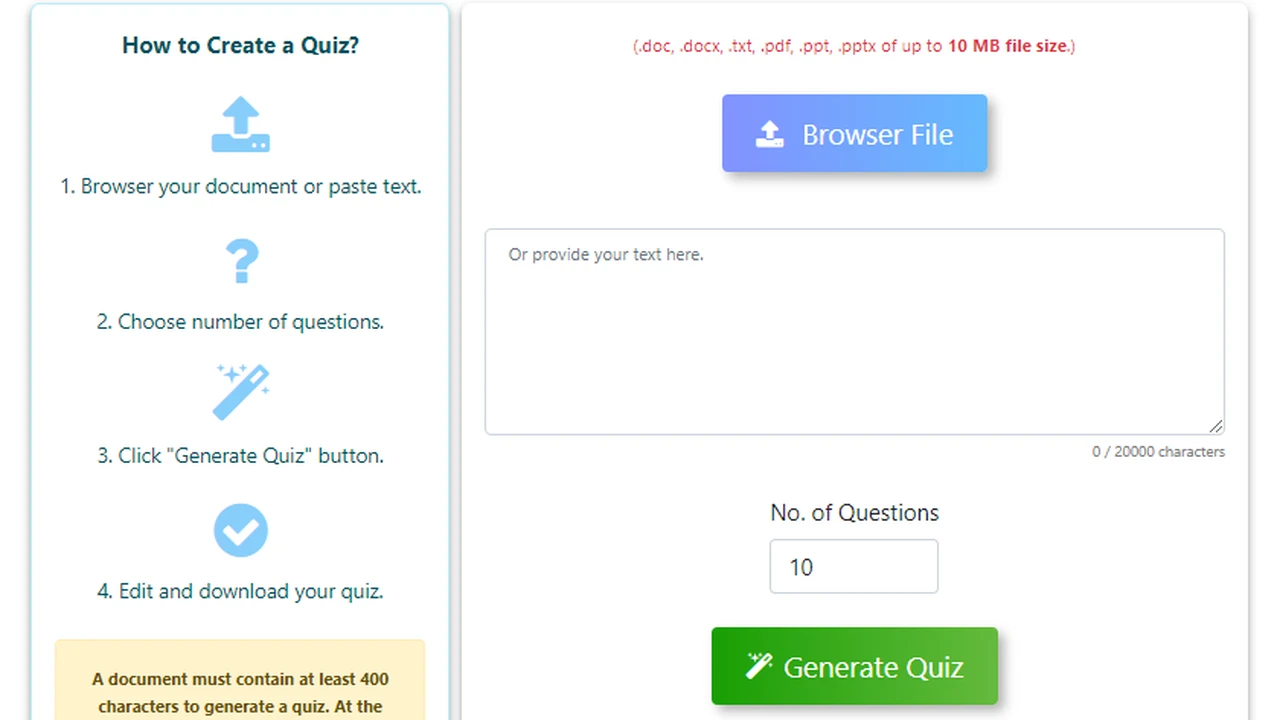Building AI Powered Translation Services
Establish a translation service that utilizes advanced AI for fast and accurate language conversions.

Building AI Powered Translation Services
The Rise of AI in Translation Understanding the Landscape
The world is more connected than ever, and with that comes a massive demand for seamless communication across language barriers. Gone are the days when translation was solely the domain of human linguists. While human expertise remains invaluable, Artificial Intelligence has revolutionized the translation industry, making it faster, more accessible, and often more cost-effective. If you're looking to build a profitable side hustle or even a full-fledged business, establishing an AI-powered translation service is a fantastic opportunity. This isn't just about running text through Google Translate; it's about leveraging sophisticated AI models, integrating them smartly, and offering a valuable service to businesses and individuals alike.
The landscape of AI translation is vast and constantly evolving. We're talking about Neural Machine Translation (NMT) models that learn from vast datasets to produce more natural and contextually accurate translations than older statistical methods. These systems can handle everything from simple sentences to complex technical documents, legal texts, and even creative content. The key is understanding their strengths and limitations, and knowing when and how to augment them with human oversight or specialized tools.
Why AI Translation Services Are a Lucrative Side Hustle Market Demand and Opportunity
The demand for translation services is booming. Businesses are expanding globally, content creators are reaching international audiences, and individuals need to communicate across borders. Traditional human translation can be slow and expensive, especially for large volumes or urgent requests. This is where AI-powered services shine. They offer speed, scalability, and competitive pricing, making them attractive to a wide range of clients.
Consider the sheer volume of content being generated daily: websites, marketing materials, product descriptions, customer support chats, legal documents, academic papers, and more. Each of these often needs to be available in multiple languages. Small to medium-sized businesses (SMBs) often lack the budget for dedicated in-house translation teams or expensive agencies. They are prime candidates for your AI-powered service. Furthermore, niche markets, such as technical documentation for specific industries (e.g., medical, engineering), or creative content like video subtitles, also present significant opportunities.
Your value proposition will be clear: fast, accurate, and affordable translations. You can cater to urgent requests, handle large projects efficiently, and offer specialized services that go beyond basic machine translation. This market is not just about replacing human translators but empowering them and providing a new tier of service that fills a critical gap.
Core Components of an AI Translation Service Essential Tools and Platforms
To build your AI-powered translation service, you'll need to understand and utilize several key components. This isn't a one-size-fits-all solution; rather, it's about combining the right tools for the right job.
Neural Machine Translation NMT Engines The Powerhouses
At the heart of your service will be powerful NMT engines. These are the AI models that do the heavy lifting of translation. Here are some of the leading options, each with its strengths, typical use cases, and pricing models:
1. Google Cloud Translation AI
Description: Google's offering is robust and widely used, leveraging years of research in machine translation. It offers both a basic API and an advanced 'Advanced' version with features like custom models and glossaries. It supports a vast number of languages and is known for its general-purpose accuracy.
Use Cases: General text translation, website localization, real-time chat translation, document translation for common language pairs.
Key Features:
- AutoML Translation: Allows you to train custom models using your own parallel data (source and target language pairs) to improve accuracy for specific domains or terminology. This is crucial for niche services.
- Glossaries: Define specific terms and their translations to ensure consistency, especially for brand names, product names, or technical jargon.
- Batch Translation: Efficiently translate large volumes of text or documents.
- Document Translation: Translate entire documents while preserving formatting.
Pricing: Tiered pricing based on character count. For example, as of late 2023/early 2024, the basic API might be around $20 per million characters, while the Advanced API with custom models could be higher. AutoML training and hosting also incur separate costs. They offer a free tier for initial usage.
2. DeepL API
Description: DeepL is renowned for its highly natural-sounding translations, particularly for European languages. Many users find its output superior to Google Translate for nuanced and idiomatic expressions. It's built on advanced neural network architectures.
Use Cases: High-quality general text translation, marketing copy, literary texts, business communications where fluency is paramount.
Key Features:
- Superior Quality: Often cited for producing more human-like translations.
- Formal/Informal Tone: For some languages, it can adjust the formality of the output.
- Glossaries: Similar to Google, allows for custom terminology.
- Document Translation: Supports various document formats.
Pricing: Subscription-based plans, often with a fixed monthly fee plus usage-based charges for character count. For instance, a starter plan might be around $5.99/month for 1 million characters, with higher tiers offering more characters and features. They also have a free tier for limited usage.
3. Microsoft Translator Text API
Description: Part of Azure AI services, Microsoft Translator offers robust translation capabilities with extensive language support. It's well-integrated into the Microsoft ecosystem and offers features for enterprise-level solutions.
Use Cases: Enterprise applications, customer support systems, real-time communication, integration with Microsoft products.
Key Features:
- Custom Translator: Build custom translation models tailored to your specific domain, similar to Google's AutoML.
- Dynamic Dictionary: Allows for on-the-fly adjustments to terminology.
- Transliteration: Convert text from one script to another (e.g., Pinyin to Chinese characters).
Pricing: Pay-as-you-go model based on character count, often starting around $10 per million characters, with volume discounts. A free tier is available.
4. Amazon Translate
Description: Amazon's offering within AWS, Amazon Translate provides fast, high-quality, and affordable neural machine translation. It's designed for integration into various applications and workflows within the AWS cloud environment.
Use Cases: Large-scale content localization, real-time translation for applications, integration with other AWS services like S3 for document storage.
Key Features:
- Custom Terminology: Ensure consistent translation of specific terms.
- Active Custom Translation (ACT): Allows for real-time customization of translations based on user feedback or specific rules.
- Batch Translation: Process large volumes of text efficiently.
Pricing: Pay-as-you-go, typically around $15 per million characters, with volume discounts. A generous free tier is available for new users.
Comparison of NMT Engines
Choosing the right NMT engine depends on your specific needs:
- For general, high-quality, natural-sounding translations (especially European languages): DeepL is often the top choice.
- For broad language support, extensive customization (AutoML), and integration with Google's ecosystem: Google Cloud Translation AI is excellent.
- For enterprise-level solutions, Microsoft ecosystem integration, and robust customizability: Microsoft Translator.
- For large-scale batch processing and integration within the AWS cloud: Amazon Translate.
Many successful AI translation services use a combination of these, routing different types of content or language pairs to the engine that performs best for that specific task. This is a sophisticated approach that can differentiate your service.
Translation Memory TM and Terminology Management Systems TMS Ensuring Consistency and Efficiency
Beyond the raw NMT engine, you'll need tools to manage your translation assets. This is where Translation Memory (TM) and Terminology Management Systems (TMS) come in. These are crucial for maintaining consistency, improving quality, and reducing costs over time.
Translation Memory (TM)
A TM stores previously translated segments (sentences, phrases) in a database. When a new text comes in, the TM checks for identical or similar segments. If a match is found, the stored translation is suggested or automatically inserted. This saves time, ensures consistency, and reduces the need for re-translation.
Tools: While some NMT APIs offer basic TM-like features, dedicated Computer-Assisted Translation (CAT) tools are best for this. Examples include:
- SDL Trados Studio: Industry standard, very powerful, but expensive (perpetual license often $700-$1000+).
- MemoQ: Another professional-grade CAT tool, strong features, similar pricing to Trados.
- Smartcat: Cloud-based, offers a free tier for individual use, scalable for teams. Integrates TM, glossaries, and NMT.
- Phrase (formerly Phrase TMS, Memsource): Cloud-based, excellent for collaboration, integrates well with NMT. Subscription plans vary from free (limited) to enterprise ($50-$200+ per user/month).
Terminology Management Systems (TMS) / Glossaries
A TMS (or simply a glossary feature within an NMT or CAT tool) stores specific terms and their approved translations. This is vital for technical content, brand names, or any domain where specific vocabulary must be consistently translated. For example, ensuring 'cloud computing' is always translated the same way across all documents.
Tools: Most NMT APIs (Google, DeepL, Microsoft, Amazon) offer glossary features. Dedicated CAT tools also have robust terminology management. You can also use simple spreadsheets for smaller projects, but dedicated tools are better for scalability.
Quality Assurance QA Tools Ensuring Accuracy and Fluency
Even with the best NMT engines and TMs, AI translations aren't perfect. You'll need QA tools to catch errors, inconsistencies, and awkward phrasing. This is where the 'human in the loop' often comes in, but AI can assist here too.
- Grammar and Spell Checkers: Standard tools like Grammarly (free basic, premium $12-30/month) or built-in word processor checkers are essential for the target language.
- Linguistic QA Tools: Many CAT tools (Trados, MemoQ, Smartcat, Phrase) have built-in QA checks for consistency, terminology adherence, number mismatches, etc.
- Back-Translation (for verification): Translate the AI output back to the source language using a different engine. While not foolproof, significant discrepancies can highlight issues.
- Human Review: For critical content, a human post-editor (PEMT - Post-Editing Machine Translation) is indispensable. This is where you can offer a premium service.
Workflow Automation and Integration Tools Streamlining Your Service
To run an efficient service, you'll need to automate as much of the process as possible. This involves integrating your chosen NMT engines, TM/TMS, and client-facing platforms.
- API Integration: Directly connect your website or application to the NMT APIs (Google, DeepL, etc.) for automated translation.
- Zapier/Make (formerly Integromat): No-code automation platforms that can connect various apps. For example, when a client uploads a document to Dropbox, Zapier can trigger a translation via an NMT API and then send the translated document back. (Pricing: Free basic, paid plans from $20-$50+/month).
- Custom Scripting: For more complex workflows, Python or other scripting languages can be used to build custom automation.
- Client Portal/Order Management System: A simple website or a dedicated platform where clients can upload files, select languages, track progress, and download translations. You can build this yourself or use existing solutions like WordPress with custom forms, or specialized translation management systems (TMS) like Smartcat or Phrase.
Building Your Service Step-by-Step Implementation Guide
Now that you understand the tools, let's outline the steps to build your AI-powered translation service.
Step 1 Define Your Niche and Target Audience Identifying Your Market
Don't try to be everything to everyone. Specializing will help you focus your efforts and marketing. Consider:
- Language Pairs: Are you focusing on English-Spanish, English-Mandarin, or a broader range? Some NMT engines perform better for certain language pairs.
- Content Type: General business communication, technical documents, marketing copy, legal texts, creative content (e.g., subtitles)? Each requires different levels of accuracy and potentially different NMT engines or post-editing.
- Client Size: Small businesses, individual content creators, or larger enterprises? This will influence your pricing and service level.
- Service Level: Do you offer raw machine translation, machine translation with light post-editing (PEMT), or full human post-editing for premium quality?
Example Niche: "AI-powered e-commerce product description translation for Southeast Asian markets (English to Thai, Vietnamese, Indonesian, Malay)." This is specific and addresses a clear business need.
Step 2 Choose Your Core AI Translation Engine Selecting the Best Fit
Based on your niche, select one or two primary NMT engines. If you're focusing on high-quality, natural-sounding translations for European languages, DeepL might be your primary. If you need broad language support and custom model training for technical content, Google Cloud Translation AI might be better. Sign up for their free tiers and test them extensively with sample texts relevant to your niche.
Step 3 Set Up Your Workflow Automation Streamlining Operations
This is where efficiency comes in. Decide how clients will submit files and how you'll deliver translations. Options include:
- Simple Email/Form: For a very small-scale side hustle, clients email you files, and you manually process them. Not scalable.
- Cloud Storage Integration: Clients upload to a shared Dropbox/Google Drive folder. You use Zapier/Make or custom scripts to trigger translation via API.
- Dedicated Client Portal: Build a simple website with a file upload form. When a file is uploaded, your backend code (e.g., Python script) sends it to the NMT API, receives the translation, and stores it for client download. This offers the most professional experience.
- CAT Tool Integration: If you're offering PEMT, integrate your NMT engine with a CAT tool like Smartcat or Phrase. Clients upload, the NMT pre-translates, and then you or a human editor refine it within the CAT tool.
Step 4 Implement Quality Assurance and Post-Editing Strategies Ensuring High Standards
Even the best AI needs a human touch for critical content. Decide on your QA process:
- Automated QA: Use built-in checks in CAT tools for consistency and terminology.
- Human Post-Editing (PEMT): For premium services, you'll need to either do the post-editing yourself (if you're fluent in the target languages) or hire freelance post-editors. Platforms like Upwork or ProZ.com are good places to find qualified PEMT specialists.
- Client Feedback Loop: Establish a clear process for clients to provide feedback and request revisions.
Step 5 Develop Your Pricing Model Value-Based and Competitive
Pricing for AI translation services is typically per word or per character. However, you can differentiate based on service level:
- Raw Machine Translation (MT): Lowest price, fastest delivery. Suitable for internal communication or large volumes where perfect accuracy isn't critical. (e.g., $0.01 - $0.03 per word).
- Machine Translation Post-Edited (MTPE/PEMT): Higher price, better quality. A human reviews and corrects the AI output. This is often the sweet spot for many businesses. (e.g., $0.05 - $0.10 per word).
- Human Translation (with AI assistance): Highest price, highest quality. A human translator uses AI tools to speed up their process but takes full responsibility for the output. (e.g., $0.12 - $0.20+ per word).
Consider offering tiered pricing, volume discounts, and subscription models for regular clients. Research competitor pricing to ensure you're competitive while still profitable.
Step 6 Market Your AI Translation Service Reaching Your Clients
Once your service is ready, you need to get the word out. Focus on your defined niche.
- Website and SEO: Create a professional website clearly outlining your services, pricing, and unique selling proposition. Optimize it for relevant keywords like "AI translation service," "machine translation post-editing," "fast document translation [language pair]," etc.
- Content Marketing: Write blog posts about the benefits of AI translation, case studies, or tips for global communication.
- Social Media: Engage on platforms where your target audience hangs out (e.g., LinkedIn for B2B clients).
- Freelance Platforms: List your services on platforms like Upwork, Fiverr, or specialized translation platforms (e.g., ProZ.com, TranslatorsCafe.com). Highlight your AI-powered efficiency.
- Direct Outreach: Identify businesses in your niche and reach out directly with a tailored offer.
- Partnerships: Collaborate with web development agencies, e-commerce consultants, or content marketing firms who might have clients needing translation.
Advanced Strategies and Future Considerations Scaling and Enhancing Your Service
Custom Model Training The Next Level of Accuracy
For highly specialized niches (e.g., medical, legal, specific product lines), generic NMT models might not be accurate enough. Investing in custom model training using your client's specific parallel data (source and target texts) can significantly improve quality and consistency. Google Cloud Translation AI's AutoML and Microsoft Custom Translator are excellent for this. This allows you to offer a premium, highly specialized service that generic providers cannot match.
Integrating with Content Management Systems CMS Seamless Workflows
Many businesses use CMS platforms like WordPress, Shopify, or custom systems. Offering direct integrations (via plugins or APIs) can make your service incredibly appealing. Imagine a client publishing a new blog post in English, and your service automatically translates it into five other languages and publishes them on their multilingual site. This adds immense value.
Real-time Translation Services Expanding Your Offerings
Consider offering real-time translation for chat applications, customer support, or live events. This requires low-latency NMT APIs and robust integration, but it opens up new revenue streams.
Voice and Video Translation Transcription and Subtitling
Beyond text, the demand for voice and video translation is huge. This involves:
- Speech-to-Text (STT): Transcribing audio/video into text (e.g., Google Cloud Speech-to-Text, AWS Transcribe).
- Text Translation: Translating the transcribed text using your NMT engines.
- Text-to-Speech (TTS): Generating translated audio (e.g., Google Cloud Text-to-Speech, Amazon Polly).
- Subtitling: Creating time-coded subtitles for videos.
This is a more complex service but highly in demand for content creators, e-learning platforms, and media companies.
Ethical Considerations and Data Privacy Building Trust
As you handle client data, especially sensitive information, data privacy and security are paramount. Ensure your chosen NMT providers comply with relevant regulations (e.g., GDPR, CCPA). Clearly communicate your data handling policies to clients. Building trust in an AI-driven world is crucial for long-term success.
Building an AI-powered translation service is a dynamic and rewarding venture. By strategically combining powerful AI tools, streamlining your workflow, and focusing on a specific market need, you can establish a highly efficient and profitable business in the ever-expanding global communication landscape.
:max_bytes(150000):strip_icc()/277019-baked-pork-chops-with-cream-of-mushroom-soup-DDMFS-beauty-4x3-BG-7505-5762b731cf30447d9cbbbbbf387beafa.jpg)






